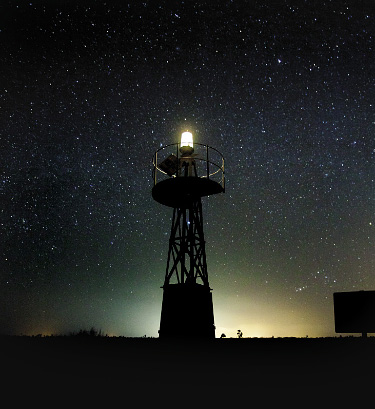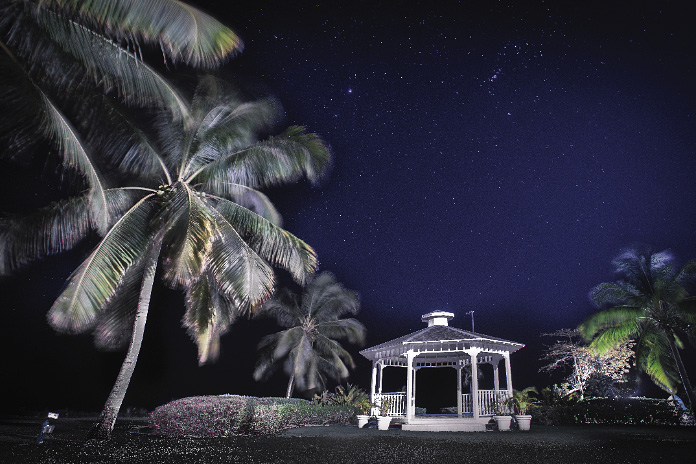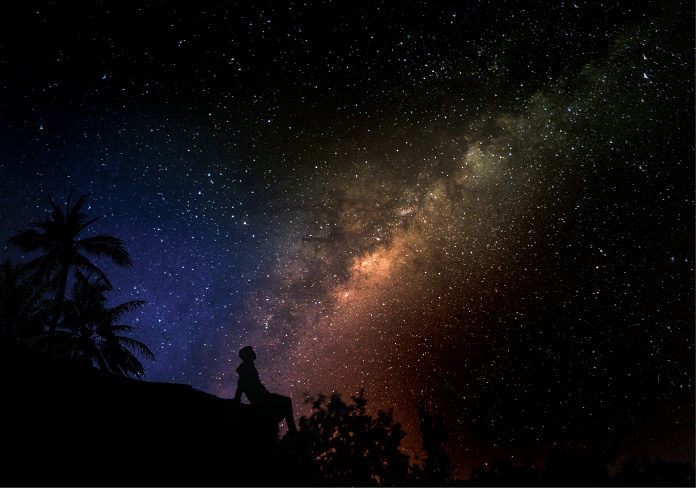Let’s begin with a quiz:
Question One: How much does a thimbleful of neutron star material weigh?
Answer: If you placed thimble on one side of a seesaw, you would need 100 million elephants on the other side to make it balance. Or, to put it another way, a sugar cube of neutron star material approximates the weight of all of the automobiles in the United States – combined!
Question Two: How big is the Sun?
Answer: Pretty big. 1.3 million Earths would fit into it!
Question Three: How many stars make up the Milky Way?
Answer: 300 billion!
It’s nearly impossible to contemplate the universe – planets, moons, stars, galaxies, indeed the infinite “beyond” – without being inexorably drawn in by their gravitational pull. Physicists, philosophers, and poets alike have succumbed to the allure, the mystery, and the romanticism of the heavens.
This is a fascination in which we all can participate – as indeed the world did on August 21 as the most dramatic solar eclipse in decades, seemingly magically, turned day into night.
We are pleased to tell you, both visitors and residents, that the night sky here in the Cayman Islands presents an ideal location for stargazing. Hundreds of miles from major light and pollution sources, these Caribbean islands offer spectacular views of the firmament. And lucky gazers have been known to catch a glimpse of the Milky Way in exceptionally good conditions.
The best locales for stargazing are from more remote areas during a new moon phase. In Grand Cayman, popular spots are Rum Point, East End and Barkers Beach – all ideal to lie back and look skyward. The Sister Islands are also great places to star-gaze since they have almost no light pollution.
The night sky can be a bit daunting if you are just starting out with the whole universe to get to know. Both serious and budding stargazers might want to join The Cayman Islands Astronomical Society for one of their monthly meetings at Pedro St. James in Savannah.
The meetings are held two to three days after a new moon to ensure a dark sky, and the Society brings its 10-inch telescope to allow close-up views of the planets and galaxies, as well as meteors and passing satellites such as the International Space Station and even the Hubble Telescope. However, be aware meetings may be canceled at the last minute if the sky is more than 50 percent cloudy.
A little history lesson . . .

Call it egocentricity or hometown bias but over the eons, man, astronomers, scientists of every stripe, and the church – especially the Catholic church – preached that the planet Earth was the center of the solar system – and that the sun orbited around us, not the other way around.
That erroneous belief, which can be attributed to astronomer Claudius Ptolemy (with an assist from Aristotle), was considered “settled science” for 1,300 years.
It took another astronomer, Nicolaus Copernicus, to set things straight in 1543 in a book he published called “De revolutionibus orbium coelestium.” While it might not sound like an Amazon bestseller, scholars consider it to be one of the most important books ever written.
Copernicus got it right, and his explanation is now known as the “heliocentric model” (“Helio” means sun). Here’s the way it works:
The sun (a star) is in the middle. Earth (a planet) orbits around the sun (once per year). The moon orbits around the Earth (once per month). Other planets – there are eight in total – also orbit around the sun in elliptical paths, not in perfect circles.

What you might see
The moon is the most obvious sighting in the night sky. As you no doubt know (since we mentioned it above), the moon orbits around the Earth, making approximately one rotation per month, but did you know that the word “month” is a linguistic relative of “moonth”?
The world’s oceans are controlled by the gravitational pull of the moon, resulting in high and low tides. Only 12 people have ever landed there (including frequent Cayman visitor Dr. Buzz Aldrin) and because there is no wind, if you visited the moon today, you would still see Buzz’s footprints!
When you see stars, you are looking into the past. Because light takes time to travel and stars are many light-years away from Earth, you could be seeing a star that doesn’t exist anymore.
The Caribbean is much closer to the equator than the United States or Europe, so you will see much more of the southern sky and less of the northern sky. Being a mere 19 degrees north of the equator, Cayman is treated to numerous stars and objects, including the Southern Cross, (which, despite its fame and popularity, is a bit overrated. Of the 88 defined constellations, the Southern Cross, alas, is the smallest.)
For gazing, you may want to get off the land entirely and out into the open sea. Even the Red Sail “water taxi” back from Rum Point can give you a glimpse of breathtaking celestial displays. But if you want to make the most of the Caribbean night sky at its most grand, consider taking a cruise: Cunard’s Queen Mary 2 has the world’s only planetarium at sea!



















